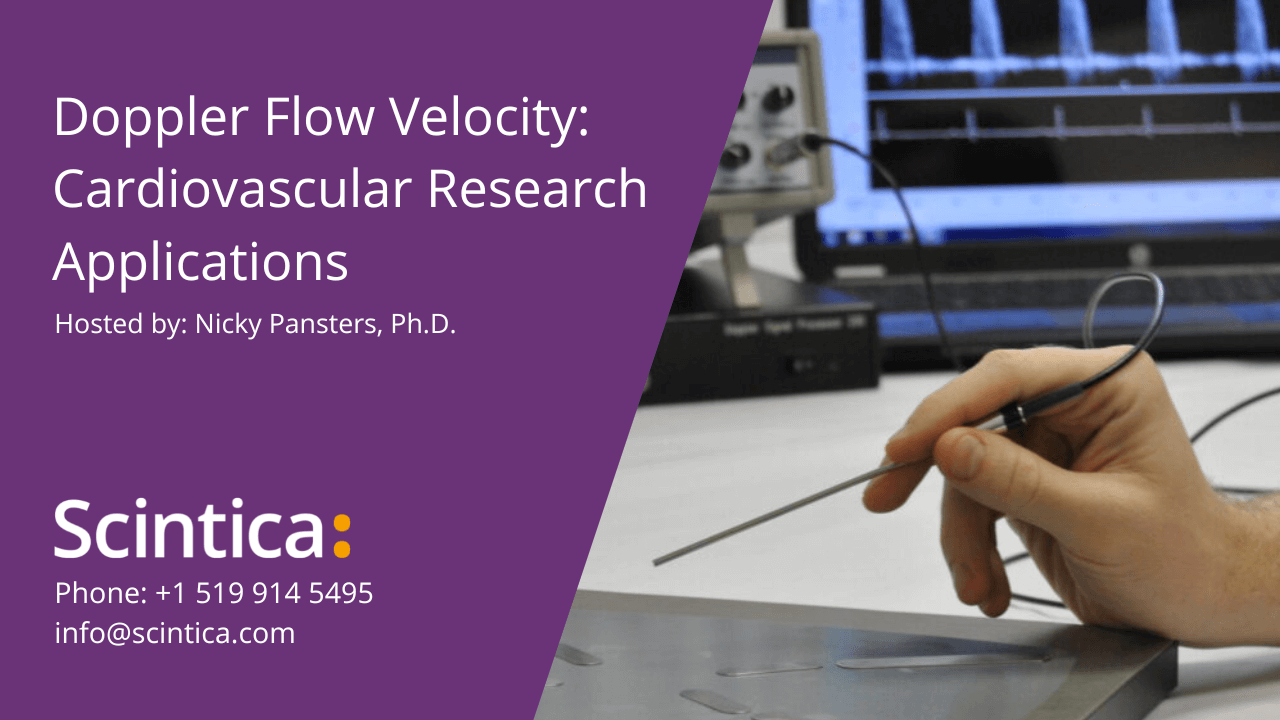WEBINAR: Doppler Flow Velocity: Applications in Cardiovascular Research
This free webinar hosted by Scintica Instrumentation provided an overview of performing “Doppler” measurements for preclinical cardiovascular assessment. It discussed the physical principles and technology used to acquire these measurements, how these techniques are employed in the preclinical field, and a short summary of the history behind the technology that so many researchers use every day.
The focus of the webinar was on the considerations that must be made when using these techniques, as well as the relevant methods and publications that help to describe how these techniques are being used in research.
The term “Doppler” measurement describes a principle of physics where varying frequencies of sound are used to assess the speed of moving objects. In the preclinical and clinical fields, this term has become synonymous with acquiring blood flow velocity measurements, using different frequencies of sound to non-invasively determine the speed of blood travelling in the cardiovascular system. Many researchers and clinicians use blood velocity measurements to assess parameters that are indicative of cardiac function. Blood flow velocity can be assessed non-invasively using pulsed-wave Doppler and therefore is of great interest to cardiovascular researchers that are examining longitudinal changes in cardiac or vascular function.
In a clinical setting, it is common to use the non-invasive method of blood pressure (usually using an arm cuff) to quickly assess cardiovascular health. In the preclinical field, an invasive blood pressure catheter is often used as the gold standard for assessing cardiovascular condition. These invasive catheters usually render the procedures terminal and thus less desirable for longitudinal studies, where terminal procedures usually require very high animal numbers and rigid time points. Using a non-invasive method allows a researcher to track changes in each animal over time, allowing each animal to serve as their own control to follow the progression of a disease. There is a correlation between blood pressure and blood flow velocity, and Doppler measurements of blood velocity in varying parts of the cardiovascular system can be used as a valid alternative to invasive blood pressure procedures.
In this webinar, we discussed some of the blood flow velocity values obtained with pulsed-wave Doppler and their implications for cardiovascular condition assessment in the preclinical context.
Topics discussed in this webinar included:
- A brief of history on the technique and technology
- Some basics of Doppler Flow Velocity methods
- Use of the “Doppler” principle for different preclinical systems, specifically ultrasound vs. laser
- The data that can be obtained from “Doppler” measurements
- Considerations when using the ultrasound-based systemsHighlights of published applications using blood flow velocity measurements acquired using pulsed-wave Doppler.

About the Speaker (s)

Nicky Pansters, Ph.D.
Nicky holds a Ph.D. from the University of Maastricht, in the Netherlands. His expertise includes skeletal muscle remodeling, cell culture and molecular biology. He previously worked on cellular signaling pathways involved in muscle (cell) differentiation and (re)growth both in vitro and in vivo. Nicky is currently a product manager for Europe with Scintica Instrumentation.